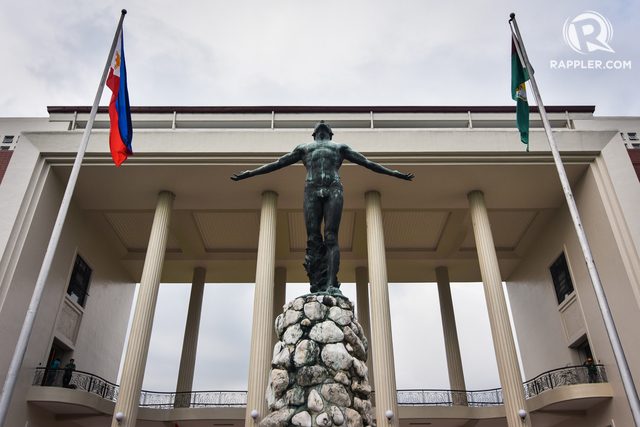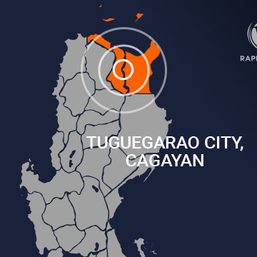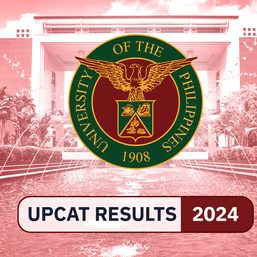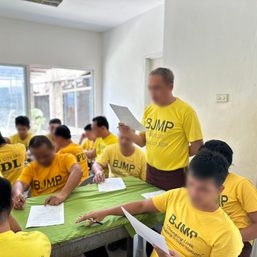SUMMARY
This is AI generated summarization, which may have errors. For context, always refer to the full article.

Following a social media maelstrom over how the University of the Philippines (UP) evaluated freshmen applicants this year, its director for admissions said that the country’s premier university “didn’t go blindly” in its process.
In an interview with Rappler on Friday, July 16, UP Office of Admissions director Francisco delos Reyes said that since university councils decided to not administer the UP College Admission Test (UPCAT) for prospective students, they came up with an admissions model for academic year 2021-2022.
The model they used, Delos Reyes said, underwent careful vetting and review process by the university’s pool of experts.
“The rule that was developed was presented to several panels within the university. This underwent vetting. We fitted the model with the cohort of 90,000 plus na students that were admitted in the university [in the previous years],” he added.
“UP did not go blindly. We did carefully all the options we had. There were five choices. We set committees to evaluate them,” Delos Reyes said. (READ: UP studying 5 options for UPCAT 2021)
In November 2020, UP announced that its university councils decided to not administer the UPCAT for academic year 2021-2022. Instead, freshmen applicants sent their application forms through an online portal, together with their high school grades that were used to evaluate them. (READ: UP cancels UPCAT 2021)
On Thursday, July 15, as UP released its college admission results, tweets coming from unsuccessful applicants lamented the university’s evaluation process. A number of them were from students of the Philippine Science High School or Pisay. Pisay became one of the most trending topics on Twitter.
Pisay is a “research-oriented and specialized public high school system in the Philippines” that operates as an attached agency of the Philippine Department of Science and Technology. Students who want to study in Pisay also undergo a thorough process and must have a good scholastic standing.
On Twitter, some Pisay students expressed their disappointment for not making it to UP, despite having good grades and even passing college admission results abroad.
On Friday, students organized themselves to probe the results of this year’s college admission results. Twitter user @ovilianney shared a screenshot of a supposed Zoom meeting where students shared their initial findings.
“System-wide results so far show a 50% drop in UP acceptance rate, with all campuses showing drastic rate reductions as well,” he tweeted.
Some claimed that Pisay had an overall passing rate of 90% in UPCAT in previous years. Delos Reyes confirmed to Rappler that indeed the passing rate for Pisay applicants had dropped this year, but said that “around 77%” passing rate for the Pisay main campus in Metro Manila is still high compared to other schools.
“Mataas pa rin ang passing nila. Hindi kasingtaas ng dati pero mataas pa rin (They still have high passing rate, not as high as before). In Pisay main, around 77%,“ he said. In Pisay main campus, around 77%.)
“We were looking at the data, magaganda naman ang UPG (University Predicted Grade) nila. Let me tell you that this is relative to the cohort of the more than 100,000 people who applied. So matataas pa rin sila. In fact sila ‘yung matataas na passing rate sa lahat ng public science high schools,” he added.
(We were looking at the data, they have good UPG. Let me tell you that this is relative to the cohort of the more than 100,000 people who applied. So they still have high UPGs. In fact, they have one of the highest passing rate among public science high schools.)
Not just grades
Delos Reyes explained that though UP did not administer admission exams, several factors were taken into consideration.
“UP is a national university so we have to look at the different strata of our society. As an excellence-equity admission system, 70% pagalingan, pero may 30% tayo for economic and geographic equity,” he said.
(As an excellence-equity admission system, 70% for academic excellence, but we have 30% for economic and geographic equity.)
(Editor’s note: An earlier version of this story erroneously reported that academic excellence accounts for 30% under the excellence-equity admission system. This has been corrected.)
Delos Reyes noted that they also gave a chance to qualified students from remote areas and far-flung provinces. He did not give further details how students from these areas were selected or the number of slots that were allotted to them.
“We have considerations for economic equity so siyempre ‘yung mga hindi kaya magpaaral. May mga tanong ‘yan sa application form. Kung nasa malayong lugar, bibigyan ka namin ng chance,” he explained.
(We have economic considerations for economic equity for those who cannot afford to go to school. The application form includes questions about it. If you’re from a far-flung area, we will give you a chance.)
The university admissions director said that this year also involved a “unique” process of evaluation – some applicants received phone calls or emails from the colleges they put in their application form to gather more information that would aid in the evaluation process.
“Minsan ang hirap intindihin na bakit ganito naman kataas ang grade ko ah, bakit ito lang ang UPG ko? Sa UP, hindi lang ikaw ang tinitingnan, tinitingnan namin ang landscape ng lahat na nag-apply,” he explained.
(Sometimes, it’s difficult to understand that, why is that I have good grades and my UPG is just this? In UP, we don’t see just look into your credentials, we check the landscape of all the applicants.)
Delos Reyes said that this year, UP received more than 100,000 applicants. However, some 8,000 applications were not processed due to incomplete information sent to them. He said that they reached out to these students many times but the students still failed to comply.
At least 11,000 were given admissions for academic year 2021-2022 across different UP campuses, he said. But this figure could still go up as UP allows students to file an appeal for admission. The mechanics for reconsideration of application or appeal will be out soon.
“Customized ang sulat na natanggap ng ating mga applicants. Sinabi namin na we regret to inform pero puwede kayo mag appeal depende sa cutoff ng bawat campuses. It’s not the end; may pagasa,” he said.
(Applicants received a customized email. We told that we regret to inform but you could still file an appeal depending on the cutoff of each campus. It’s not the end; there’s still hope.)
“If you wish to appeal, you are welcome to appeal. We will recognize your appeal,” Delos Reyes added. – Rappler.com
Add a comment
How does this make you feel?





There are no comments yet. Add your comment to start the conversation.